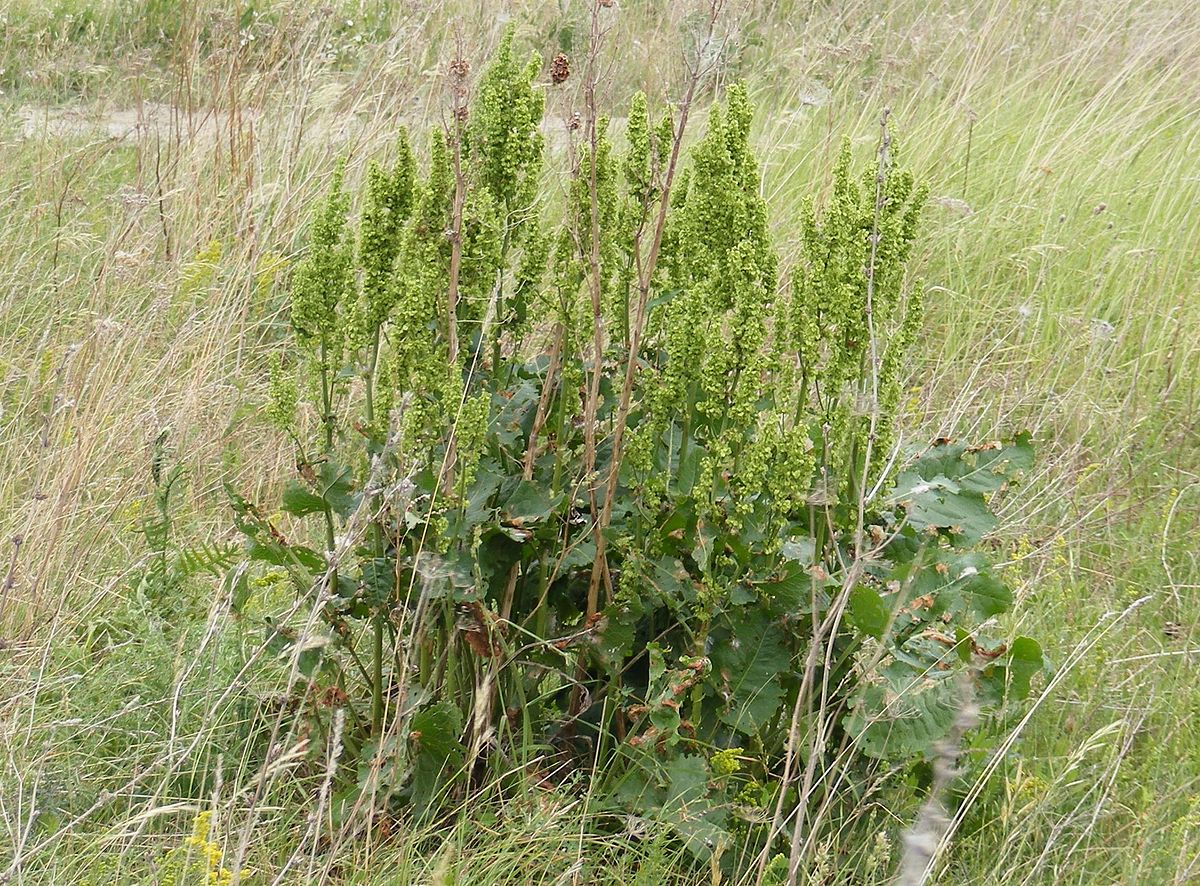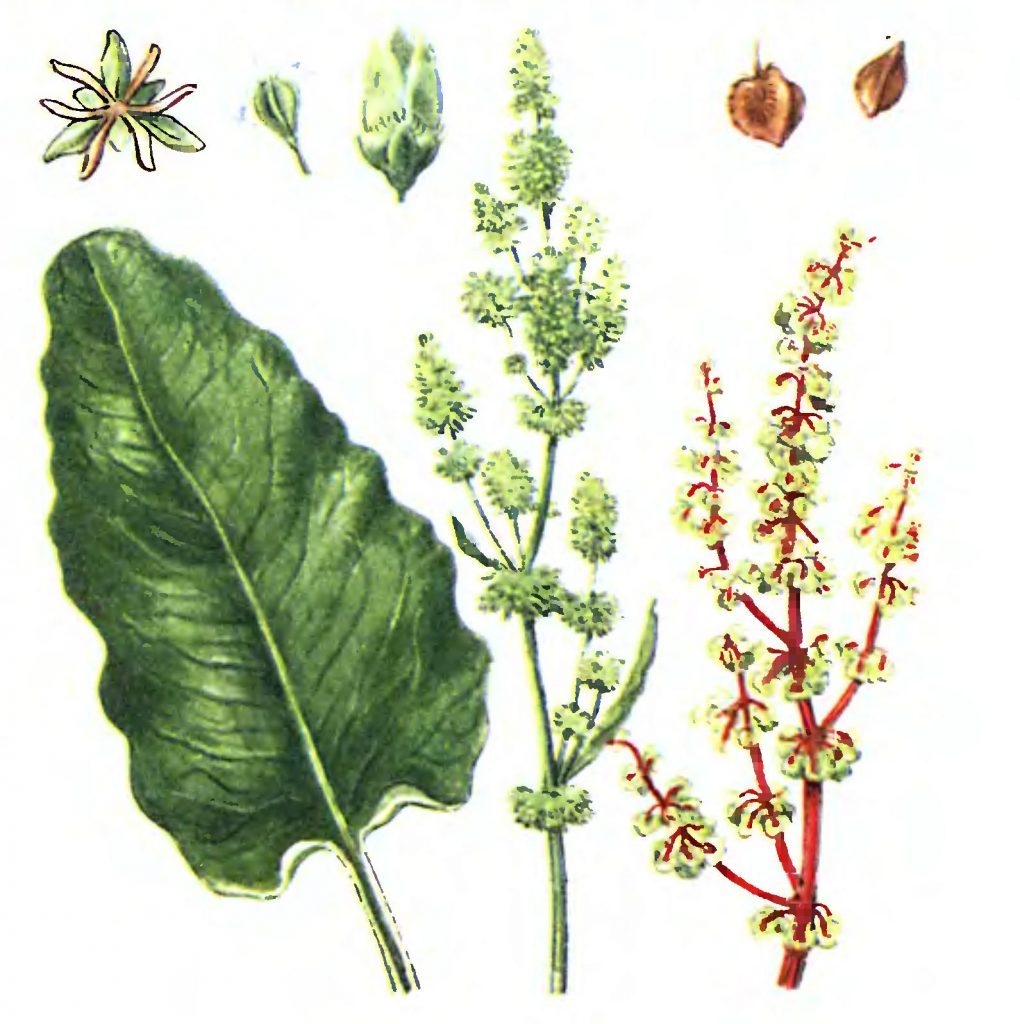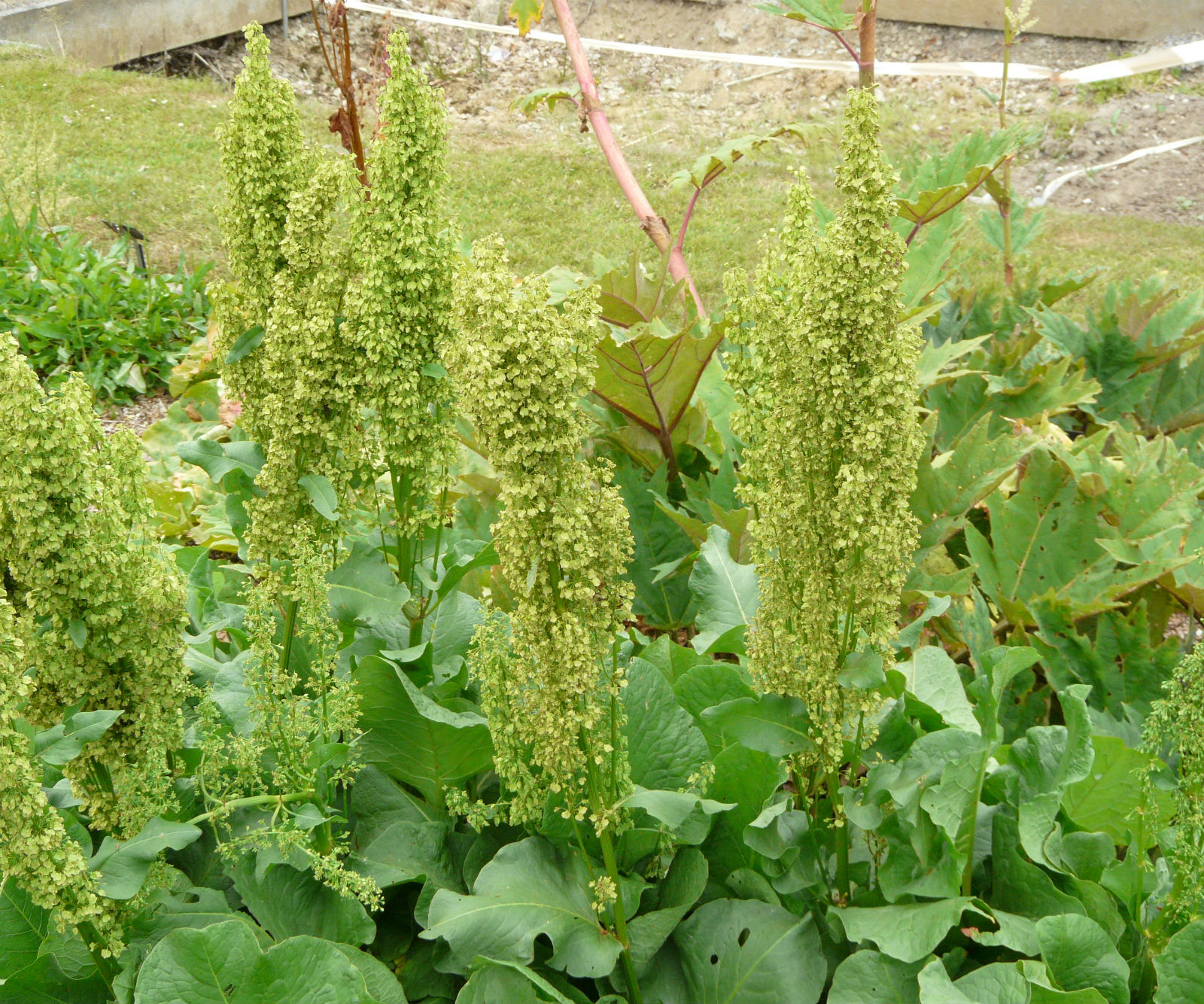There are often disputes and discussions among farmers and villagers about herbs growing in fields and near houses. The possibility of using it on the farm, for animal feed, for folk medical recipes, for food and much more is being discussed. One of these plants will be horse sorrel. Can it be used for agricultural purposes or as food for animals or people?
Description
Horse sorrel is a perennial plant that reaches a height of 150 cm, from the Buckwheat family. It has a strong branched rhizome, erect stem, bare along its entire length, but with vegetation at the top.
The leaves are large, the flowers are greenish-yellow, collected in tails, similar to curly panicles (sultans). It blooms in late spring (May) to mid-summer (July), sometimes blooms again at the end of August (in very hot summer). Its fruits are in the form of a triangular nut of light brown, reddish-red color. Propagated by seeds and vegetatively (by dividing the roots). Prefers silty soil. It grows both as one bush and in small groups.
This sorrel is considered a wild weed plant found in fields, along lake or river ditches, in garden plots located near the field.
Horse sorrel varieties
This plant is considered wild, but they began to grow it in order to eat.
For this, several varieties have been bred:
- Belleville;
- Large-leaved;
- Maikop;
- Spinach;
- Broadleaf.
They differ in their taste (some have more acidity), as well as the shape of the leaves, color, growth characteristics (ripening time, frost resistance, etc.).
The most common cultivar for home cultivation is sour sorrel. In structure, it does not differ from the rest, has an erect stem, green leaves, but the purple color of the trunk near the roots, reddish flowers, collected in panicles. It tastes the most sour variety ever grown. Used to prepare food and medicine.
The domestic species grows well at a temperature of + 5 ° C and up to + 20 ° C in slightly acidic soils. The seeds are planted in furrows with a distance of 6-7 cm between them. The soil can be fertilized with humus. After the sprouts have appeared, they need to be thinned out as needed.
Culture properties
Wild sorrel is considered a medicinal herb. Medicinal properties are its main advantages.
It has anti-inflammatory, antifungal, antispasmodic, diuretic, expectorant, laxative, sedative effects. The main thing is to choose the right proportions when preparing the medicine, so that the plant is beneficial.
For a healing infusion, roots, leaves, fruits and flowers are used, because in all parts of this culture there are useful substances. The roots contain tannins from the pyrocatechin group, flavonoids, vitamin K and organic acids (oxalic, ascorbic), iron.
Horse sorrel root is used for diseases such as bowel disease, dysentery, stomatitis, the presence of worms, eczema, hemorrhoids, allergies, rheumatism, purulent wounds or boils.
In medicine, this herb is widely used in preparations.You can prepare some products based on this plant and yourself. Most often used in the form of powders and decoctions. You just need to carefully follow the instructions in the recipe so as not to harm the body.
Due to its medicinal qualities, this herb began to be grown in home beds as a home culture. In addition, it attracts with its sour taste and a lot of nutrients.
This herb is early, therefore, seedlings appear in early spring, just at the moment when the body most of all needs vitamins. Then sorrel begins to be added to salads and soups for the purpose of fortification. In addition, it improves the digestion process well.
The root of the herb is harvested in the fall, after the aerial part of the plant becomes dry. It is thoroughly washed and dried. The green part of the sorrel is harvested during the flowering period, the fruits in August, if they are ripe. Shelf life is up to three years. From the dried plant, infusions are made with the addition of alcohols or other agents to be used for rubbing or to drink as a medicine, both in adults and in children. But it is necessary to use horse sorrel for the treatment of a child's body in a small dosage and after a preliminary consultation with a doctor.
In addition to medical use, wild sorrel is used for animal feed (rabbits, chickens, geese, pigs).
You can also get a yellow paint from the roots, and if you add copper sulfate, you get a black color. The roots are also used for tanning leather.
Pests dangerous for sorrel
For garden sorrel, there are several dangerous pests that can severely damage the crop, even though its leaves are very sour.
You can immediately understand that someone is eating the foliage by the presence of small round holes or by the withered tips of the leaf. This picky plant can wither away mainly due to harmful insects.
Dangerous pests for sorrel and methods of dealing with them:
- Leaf beetle. Leaves holes in the leaves, around which redness begins. The beetle leaves the larvae on the back, which actively eat the foliage. To eliminate this pest, a spray of pyrethrum tincture (garden flower) is suitable;
- Aphid. Lives on the inside of foliage, sucks sap out of it, which leads to yellowing and wilting, weakening of the roots and death. Soap solution, ash, dandelions, tobacco and garlic will help from it;
- Spider mite. This is the result of the appearance of aphids on the bushes. Soap solution will help, as well as for the fight against aphids, infusions of dandelions, burdock and garlic;
- Sorrel sawfly. Leaves caterpillars that completely eat up the foliage. For prevention, you need to remove the weeds and treat the tops with an infusion of pharmacy chamomile and laundry soap;
- A winter butterfly moth that leaves caterpillars feeding on acidic shoots of sorrel. In order to remove it, in the fall you need to dig up the soil deep enough, and as the sorrel grows, hang vessels with fermenting liquid above it in order to distract insects from the shoots;
- Wireworm is a clicker beetle larva that feeds on sorrel roots, as it is the earliest plant after winter. In order to get rid of it, you will need to place pieces of potatoes in the ground in order to distract and then eliminate the larvae from the ground with them.
Even if you do not know how the sorrel looks healthy, you can immediately understand that insects damage it. It is better not to delay with his cleaning in the garden, but to use immediately after he began to sprout, while young.










